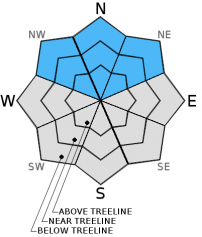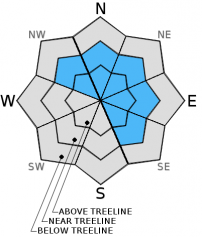| Saturday | Saturday Night | Sunday | |
|---|---|---|---|
| Weather: | Mostly cloudy with scattered showers. Snow level 7800 to 8200 ft. | Partly cloudy becoming mostly cloudy | Mostly cloudy |
| Temperatures: | 38 to 44 deg. F. | 23 to 30 deg. F. | 38 to 45 deg. F. |
| Mid Slope Winds: | Southwest | Southwest | Southwest |
| Wind Speed: | 15 to 25 mph with gusts to 35 mph | 10 to 15 mph decreasing during the night | Light increasing to 15 to 20 mph with gusts to 30 mph in the afternoon |
| Expected snowfall: | up to 1 | 0 | 0 |
| Saturday | Saturday Night | Sunday | |
|---|---|---|---|
| Weather: | Mostly cloudy with scattered snow showers. Snow level 7800 to 8200 ft. | Partly cloudy becoming mostly cloudy | Mostly cloudy |
| Temperatures: | 30 to 37 deg. F. | 23 to 30 deg. F. | 34 to 41 deg. F. |
| Ridge Top Winds: | Southwest | Southwest | Southwest |
| Wind Speed: | 40 to 45 mph with gusts to 65 mph decreasing to 30 to 35 mph with gusts to 50 mph in the afternoon | 15 to 25 mph with gusts to 35 mph | 20 to 30 mph with gusts to 35 mph increasing to 45 mph in the afternoon |
| Expected snowfall: | up to 1 | 0 | 0 |

























